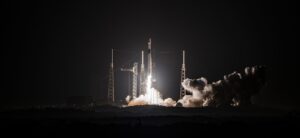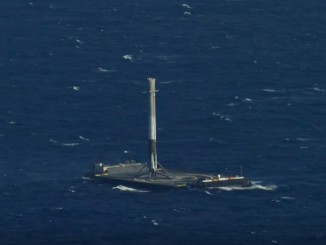
Continuing to push the boundaries of rapid reuse, SpaceX set a new launchpad turnaround record in the predawn hours of Saturday when it launched its latest Falcon 9 rocket.
The mission, dubbed Starlink 10-34, rocketed off the pad at 12:26 a.m. EDT (0426 UTC), coming two days, eight hours, 31 minutes and 10 seconds after the launch of the Starlink 10-16 mission on June 25.
This beat the previous record set by SpaceX back in March by nearly 30 minutes.
SpaceX managed to launch its 27 Starlink V2 Mini satellites at the beginning of the early morning launch window, despite some inclement weather that passed through Florida’s Space Coast on Friday night heading into the launch opportunity.
SpaceX used the Falcon 9 first stage booster with the tail number B1092 to launch the Starlink 10-34 mission, which flew for a fifth time. Its previous missions were:
- Starlink 12-13
- NROL-69
- CRS-32
- GPS III SV08
A little more than eight minutes after liftoff, B1092 landed on the droneship, ‘A Shortfall of Gravitas.’ This was the 115th touchdown on this vessel and the 469th booster landing to date.
SpaceX has one more Falcon 9 launch scheduled for Saturday, June 28, which is the Starlink 15-7 mission. That will launch from Vandenberg Space Force Base with a planned liftoff time of 9:47 a.m. PDT (12:47 p.m. EDT, 1647 UTC).
Saturday morning’s launch was the 497th Falcon 9 flight to date, coming on the 10th anniversary of the company’s seventh Commercial Resupply Services (CRS-7) mission to the International Space Station. That mission ended abruptly with an in-flight anomaly, but it resulted in a notable block upgrade for the Falcon 9 rocket that’s still in use today.



